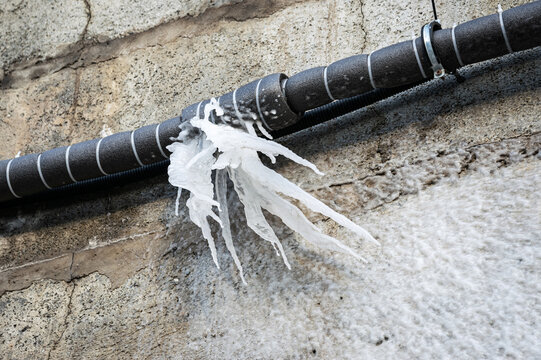Essential Strategies for Avoiding Frozen Pipes in Cold Weather
Essential Strategies for Avoiding Frozen Pipes in Cold Weather
Blog Article
Everyone may have his or her own assumption about Prevent Frozen Pipes .

Cold weather can ruin your plumbing, particularly by freezing pipelines. Right here's just how to avoid it from taking place and what to do if it does.
Introduction
As temperature levels decrease, the danger of frozen pipes rises, potentially leading to expensive repairs and water damages. Understanding exactly how to stop frozen pipes is critical for property owners in cool environments.
Understanding Frozen Pipelines
What creates pipelines to ice up?
Pipes ice up when revealed to temperature levels below 32 ° F (0 ° C) for extended periods. As water inside the pipes freezes, it expands, putting pressure on the pipe walls and possibly creating them to break.
Threats and problems
Icy pipelines can lead to supply of water disruptions, residential property damages, and expensive fixings. Ruptured pipes can flood homes and cause substantial architectural damage.
Indications of Frozen Pipes
Determining icy pipes early can stop them from bursting.
Exactly how to determine icy pipelines
Look for reduced water circulation from faucets, unusual odors or sounds from pipelines, and visible frost on exposed pipes.
Prevention Tips
Protecting prone pipelines
Cover pipes in insulation sleeves or utilize warm tape to protect them from freezing temperatures. Concentrate on pipelines in unheated or external locations of the home.
Home heating methods
Maintain interior areas effectively heated up, specifically locations with pipes. Open cabinet doors to allow cozy air to flow around pipelines under sinks.
Safeguarding Outside Pipes
Yard pipes and outside faucets
Detach and drain garden hoses before winter. Install frost-proof faucets or cover exterior taps with shielded caps.
What to Do If Your Pipelines Freeze
Immediate actions to take
If you suspect icy pipelines, keep taps open up to relieve stress as the ice melts. Utilize a hairdryer or towels soaked in warm water to thaw pipes gradually.
Long-Term Solutions
Structural adjustments
Consider rerouting pipelines away from outside walls or unheated areas. Include extra insulation to attics, cellars, and crawl spaces.
Upgrading insulation
Purchase high-quality insulation for pipelines, attics, and wall surfaces. Correct insulation assists preserve constant temperature levels and lowers the threat of frozen pipelines.
Conclusion
Stopping icy pipelines needs positive procedures and quick responses. By comprehending the reasons, signs, and preventive measures, house owners can shield their pipes during cold weather.
5 Ways to Prevent Frozen Pipes
Drain Outdoor Faucets and Disconnect Hoses
First, close the shut-off valve that controls the flow of water in the pipe to your outdoor faucet. Then, head outside to disconnect and drain your hose and open the outdoor faucet to allow the water to completely drain out of the line. Turn off the faucet when done. Finally, head back to the shut-off valve and drain the remaining water inside the pipe into a bucket or container. Additionally, if you have a home irrigation system, you should consider hiring an expert to clear the system of water each year.
Insulate Pipes
One of the best and most cost-effective methods for preventing frozen water pipes is to wrap your pipes with insulation. This is especially important for areas in your home that aren’t exposed to heat, such as an attic. We suggest using foam sleeves, which can typically be found at your local hardware store.
Keep Heat Running at 65
Your pipes are located inside your walls, and the temperature there is much colder than the rest of the house. To prevent your pipes from freezing, The Insurance Information Institute suggests that you keep your home heated to at least 65 degrees, even when traveling. You may want to invest in smart devices that can keep an eye on the temperature in your home while you’re away.
Leave Water Dripping
Moving water — even a small trickle — can prevent ice from forming inside your pipes. When freezing temps are imminent, start a drip of water from all faucets that serve exposed pipes. Leaving a few faucets running will also help relieve pressure inside the pipes and help prevent a rupture if the water inside freezes.
Open Cupboard Doors
Warm your kitchen and bathroom pipes by opening cupboards and vanities. You should also leave your interior doors ajar to help warm air circulate evenly throughout your home.

I was shown that article about How to prepare your home plumbing for winter weather from a good friend on another blog. I beg you take the opportunity to share this post if you liked it. Thanks for going through it.
Book Appointment Now Report this page